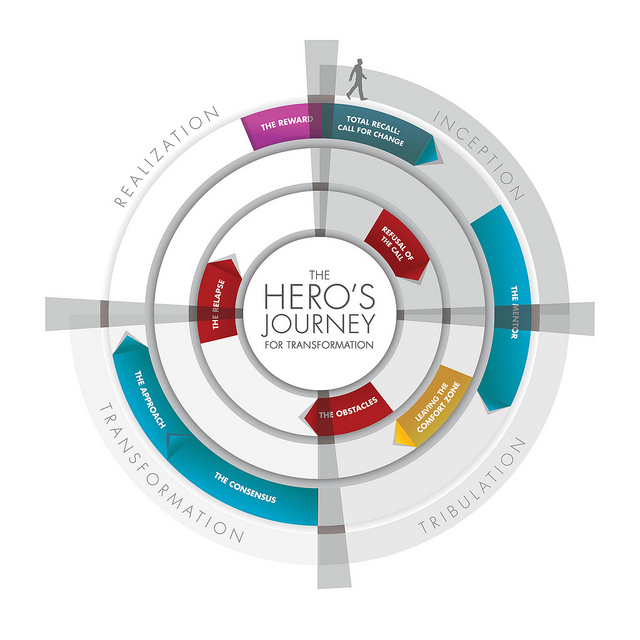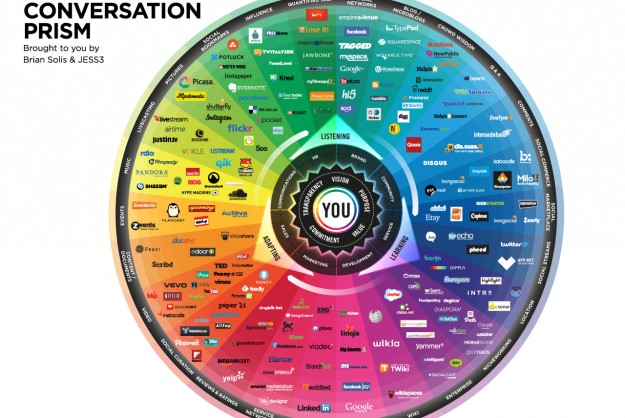Customer experience is an opportunity
In todays digital age, consumers expect more from the business they support and the products they purchase. Consumers not only expect great brand experiences, they believe theyre entitled to them. Experience are now directly tied to aspiration and intention, creativity and technology are merely the enablers. In his new book, Whats The Future of Business, Brian Solis, the principal of The Altimeter Group, takes marketers through matrix of designing and connecting for consumers.
The End Is Near. 70% of Fortune 1000 companies will be replaced in the next few years. 40% of the Fortune 500 companies in 2000 were no longer there in 2010. Edward E. Lauder, Built For Change
Brian, you state that the future of business comes down to relevance and the ability to understand how technology affects consumers decision making processes. If experience is everything, then why are brands and marketers still selling to their consumers and failing to embrace what they learn about their customers preferences to improve their experience?
Experience is indeed everything. Your question is interesting in that you ask why brands still sell to consumers and fail to embrace what they learn about customer preferences. This assumes that business leaders and supporting models are resilient in how they listen, learn and adapt. Unfortunately, we know that the contrary is most often true. Businesses simply do not operate as one organism. Today, customer experiences are indeed fed back into organizations, but their lessons do not reverberate or resonate throughout the corporate body.
Simply
Customer service does not speak to product development.
Sales and marketing does not speak to customer experience.
UX does not speak to executives.
Leaders are out of touch with how technology is affecting society and behavior.
Without an understanding of how consumerism is evolving, without a true sense of customer-centricity, businesses will continue to sell, market, and serve customers from a position of assumption rather than purpose.
The future of customer relationships and business lies in experience architecture. This means that businesses must assess what the true experience related to their brand, products, and people is as its shared not solely in the blur of metrics such as NPS that do not measure impressions (feelings, not views) and in turn, expressions.

How can we shift our views in order to understand how our customers view things? What must we learn to do?
Customer centricity begins with the belief that you can fix something that may or may not be broken. Its a philosophy. Its an aspiration. Businesses must believe that learning is part of innovation and innovation as such, must become part of the culture. Innovation applies to product development as much as it does to processes, services and ultimately experiences.
Right now, the customer experience is left largely to chance, meaning its rarely intentional. Worse, organizations are still structured around a traditional funnel. This is why silos exist. Accordingly, every step of the customer journey and the resulting lifecycle is shaped by these departments, that do not by the very nature of todays business model, work together to deliver a consistent experience.
Think 360. I define 360 not as a marketing catch-phrase, but instead a intentional effort to articulate and strengthen a deliberate customer experience at every touch point whether its online, in social or mobile, or IRL. To understand customer experiences then is to embrace empathy as part of the corporate DNA to create a sense of urgency and offer a new direction in which to pursue.
We must have something to learn. We must be driven to translate learning into insights, transform insights into ideas, and turn ideas into desired experiences.
Experience is design. Business is design. Brian Solis, The Altimeter Group
The new customer experience is actually a journey and its driven by the shared experiences of other consumers. Its perpetual. Its emotional. With big data, social media listening, research, customer information is more than readily available. More importantly, experiences and the emotions that people feel and share must be met with more than a listening or research team. This understanding and awareness requires a handheld escort throughout all avenues of the organization that in some way, shape or form contributes to the customer experience.
In your book, youve said that, Without understanding what matters to customers and why, without learning their behavior and without empathy, we cant make meaningful experiences. How does this affect the way in which we conduct consumer market research?
No matter how smart we get with predictive algorithms it doesnt matter, because without understanding social science, without aligning with a bigger mission or vision with what we are trying to do something that is going to matter to people we are just managing businesses the way we always have. We are not moving in any new direction.
I believe that companies should invest in what I refer to as a human algorithm. This is where data science meets social science. Its the ability to process information and humanize it. This delicate balance of art and science marries research and analysis with the study of human behavior. It also takes a fair amount of storytelling to appreciate what people do and say and make it relevant to every facet of corporate decision-making.
It should inform and teach.
It should inspire.
It should unlock creativity and innovation to do something better tomorrow than how we approached markets today.
When it comes to customer connectivity, UI/UX and design are a crucial piece of experience. But the book also makes the case for technology, how should brands and marketers to invest their money in software and technology that can help the design these experiences. How important are they?
The book is based on this premiseUX is the new CX and as such the RX for enlightened experience design. The book explores the art of user experience design and the importance of customer experience to challenge leaders and decision-makers to reverse engineer the customer journey. Perhaps my proudest achievement with the book was to make it an experience in of itself. I studied UX to design a business book to feel, look, and act like an analog app.
Its design mimics online and mobile content, streams and networks to make it easier and more engaging to turn each page. The goal was to create a proof point that demonstrates the importance of UX and design to make the print book matter again. I also have a mission to take this experience and one day help apply it to the world of student textbooks.
See, everything begins with the ability to articulate the customer experience you wish to enliven. It should align with or influence your brand promise and how you want them to feel, think, do, and share. What Im honestly trying to instill in readers of #WTF is the idea that customer experience is an opportunity to go back to basics. This is that moment when everything we thought or felt as consumers can become the very thing that moves us to push for change within our companies.
Often referred to as customer journey mapping, by studying the customer journey for your traditional as well as your connected customers, youll uncover a different journey for each. This is a good thing.
Touch points, shared experiences, places and people of influence, common references, at every step of the way, were introduced to a real world that we only assumed existed. Often, we misunderstood and undervalued the role experiences play in guiding this journey. We assumed that what we said, where we said it, and the investments we made in reaching people and leading their path to us was all it took to succeed in business.
Now that customers are connected theyre empowered and becoming more demanding. Why wouldnt businesses better understand this behavior to improve and personalizeeverything?

Technology therefore becomes an enabler of a greater vision and aspiration. Networks, apps, sites, become windows into new worlds and allow us to better understand whats possible and whats important. To uncover them takes research. To activate them takes prowess, empathy and purpose. But at the end of the day, we cant get caught up in technology because its trendy or pervasive. Technology merely represents the channels we use for engagement, learning, and the constant pursuit of relevance.
This is going to require a tremendous amount of vision from business leaders, how can they develop new ways of thinking in order to meet this challenges they now face?
The book doesnt provide all of the answers that business leaders need to prescribe their every next step. But thats the point. The future of business is a blank canvas. The relationship you wish to have with your customers and your employees and the experience that people feel, share and relish is yours to define. This is a time for leadership as opposed to managementor should I say middle management. This is a time to see what others do not and do what others cannot or will not.
Explore the new customer journey.
Assess the current state of shared experiences within new or unfamiliar networks.
Renew or redefine your vision for your brand, its promise and the experience you want to deliver.
Design it.
Reset your business functions to align with the customer journey where internal collaboration contributes to a consistent and reinforced experience.
Measure the relationship between stated experience and shared experience.
Listen. Learn. Adapt.
Tomorrows business will invest in a resilient and not a rigid business model to ensure the success of the business and the correlating value of relationships and experiences.
SOURCE: http://bit.ly/19qdPP1, this factual content has not been modified from the source. This content is syndicated news that can be used for your research, and we hope that it can help your productivity. This content is strictly for educational purposes and is not made for any kind of commercial purposes of this blog.